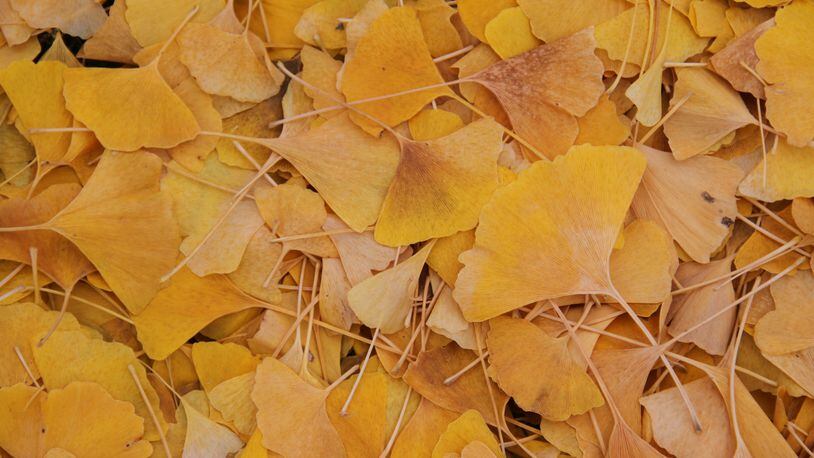One of my favorite trees is really the perfect tree. At least for now. That is the gingko, or Gingko biloba.
The gingko is a very long-lived tree and was around during prehistoric times. When I was in China in 2014, I saw a gingko that was believed to be around 2,000 years old.
Gingkos are tolerant of poor soils, and grow just about anywhere, except for wet areas. Mine is growing nicely in a former corn field in northern Clark County. Pretty much clay soil, but with good drainage.
This tree is tolerant of drought, heat, air pollution and for the most part, salt tolerant. I have never seen an insect or disease affect gingkos around here.
Deer don’t browse the foliage of this tree; however, they will rub the bark of young trees so make sure to protect the trunks.
The leaves are cool as they are fan-shapped with several leaves growing out of a single bud on dwarf shoots. These dwarf shoots are easily identified in the winter and appear as “pegs” on the branches.
These leaves turn a beautiful golden color, which all drop together in a day or two.
The tree grows around 50 to 80 feet tall and around 30 to 40 feet wide. My tree was planted in 2008 as a sapling (around three feet tall) and is now about 15 feet tall, growing about a foot a year.
The shape of the tree leads to an upright open branching structure. You will see these used quite frequently as street trees.
One of the greatest features in my opinion is the gingko’s branching structure. I can’t think of a more perfect tree when it comes to branching structure. The branches grow at a good angle from the trunk of the tree, eliminating pruning of branches for the most part.
The only pruning that I have done on my gingko is “limbing it up” or removing some of the lower branches so that my husband can easily mow under the tree. There are no crossing branches or branches growing into the center of the tree. It’s practically perfect.
Of course, nothing is perfect. Gingkos are dioecious which means there are male and female trees. The negative is that the female fruits are quite smelly when overly ripe. Smelly such as like a sewer smell or bad septic system.
Therefore, it’s recommended to plant a male tree as they don’t produce fruits. Most nurseries tend to only sell male trees.
However, gingkos may not flower and set fruit until they are around 20 years old. The seedling that I have was labeled male, but I shall find out soon.
Even if it is a female and has stinky fruits, it only lasts for a short time. The gingko is a fabulous tree in many respects and I would definitely recommend planting one.
Pamela Corle-Bennett is the state master gardener volunteer coordinator and horticulture educator for Ohio State University Extension. Contact her by email at bennett.27@osu.edu.
About the Author
